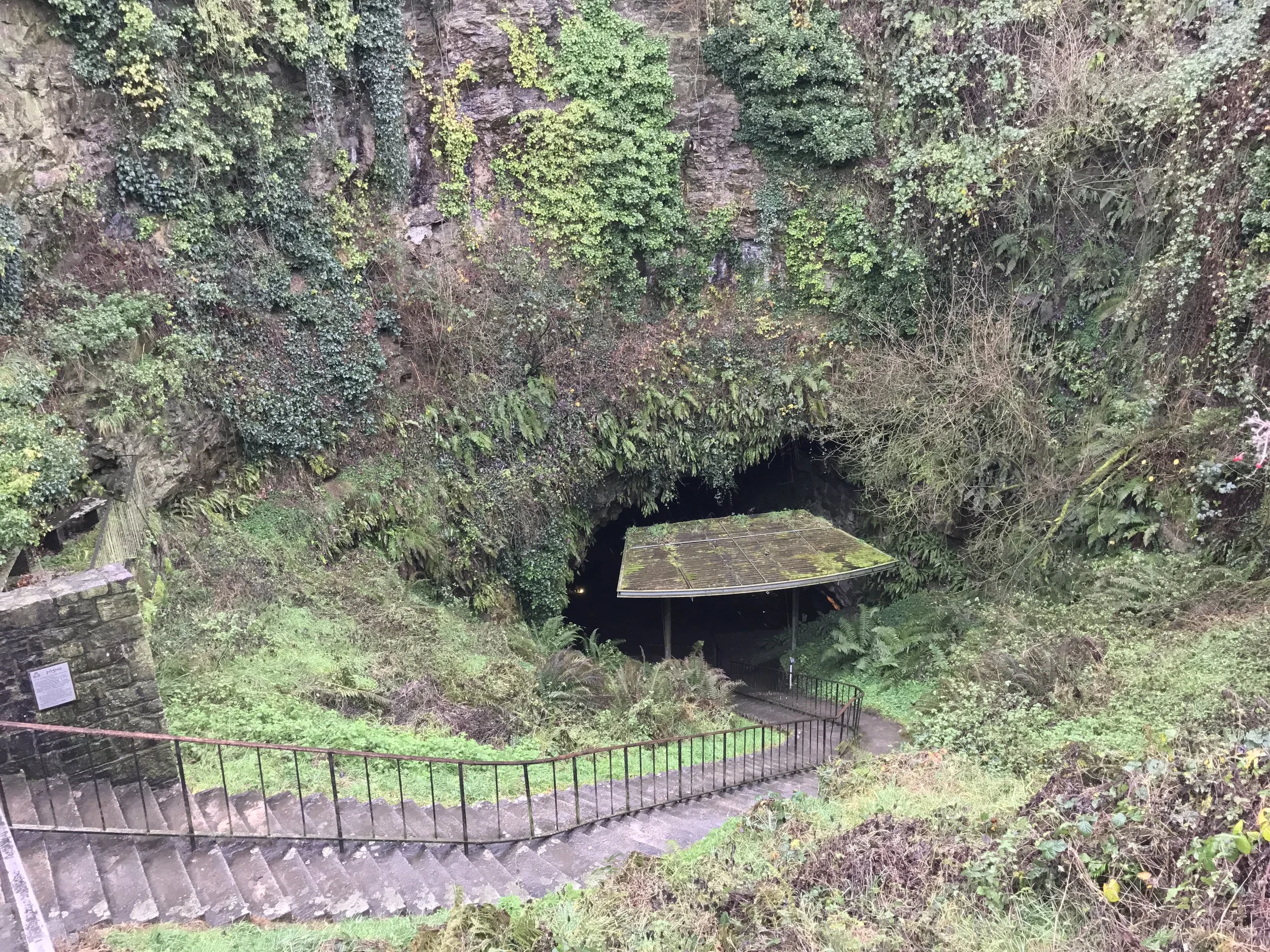Steps into Dunmore Cave
Unless one is an avid spelunker, one does not think of caves when one thinks of Ireland. However, the island is actually a location with a number of interesting geological features, including a number of caves that can be explored by a casual traveler. Generally, most of the caves in Ireland are known as “Show Caves”, which means they are operated by either a onsite concessionaire, or the government, and access is regulated via guided tours. While there are caves one can explore on one’s own, most notably in the Burren region, these caves are the purview of actual cavers, not casual tourists. Out of all of the caves in Ireland, there is only one cave that was the actual site of a mass murder, and that is Dunmore Cave.
Entrance into Dunmore Cave
While “mass murder” and “cave” pique the interest of most people, in this case, “mass murder” is a bit of an understatement. While exact figures aren’t fully known, the cave is the site where around 1,000 people were reportedly killed by Vikings. Prior to the massacre, Dunmore Cave was also famous as it was referenced in a ninth century manuscript as one of the “three darkest places in Ireland”. Even though the interior of Dunmore is dark (especially when the lights are shut off), the truth of the matter is that the interior of every cave is dark, provided there is no natural light leakage. Based on this, what makes Dunmore infamous is the massacre which occurred around 928. While historical details are scant, what is known is that at that time a Viking chieftain Godfrey Ui lmair, came to the area seeking to sack and plunder the various towns and villages. In response, many of the women, children and elderly people fled into Dunmore (“Great Fort”) Cave.
While there are a number of beautiful calcite features in the cave, the cave is also the final resting spot for a number of people.
Unfortunately, rather than leave quietly, the Vikings most likely lit a large fire at the single entrance of the cave, most likely assuming that the smoke would drive out the people inside. Instead, what likely happened is that the smoke and the fire caused the people inside the cave to asphyxiate, and as a result, without a battle occurring, all of them perished. While it is unclear how many exact people died - the historical account had some 1,000 people perishing - substantial amounts of human remains have been found in the cave, along with various interesting archeological items, such as gold and silver coins. Irrespective of the death total, the cave is a fascinating visit for these historical, as well as geologic reasons.
Today, the "Market Cross" is the most impressive of Dunmore Cave's geologic features.
Directions/Fees. Dunmore Cave is located at Castlecomer Rd, Inchabride, Kilkenny, Ireland, which is some eleven kilometers north of the town of Kilkenny. As of 2017, it is five euros for adults to tour the cave, and three euros for children. Tours leave on a regular basis, and are operated by the National Monuments Service, as the cave has been an National Monument since 1944.
Tours/Walking. While Dunmore is not Ireland’s largest or deepest cave, it does have a substantial amount of steps that descend into the cave, and of course, back out. The steps descend through the three chambers of the cave, and at the deepest point, the cave is some one hundred and fifty feet (46 meters) deep. While this amount of elevation gain and loss is not extraordinary, it is a fair amount of steps that visitors should be prepared for. The tours are led by knowledgable docents, who take the time to present the history of the cave, its geological features, and various facts over the course of an hour. At one point, the docent will stop before the “Market Cross”, which is a large column made of calcite that is over nineteen feet (5.8 meters) high. As an avid caver, it reminded me of another column across the world in Arizona, but for introductory covers and tourists, it is quite a sight. Also, at one point, the docent will turn off the lights in the cave, to show people just how dark it is. Overall, the tour is quite enjoyable - and interesting.
Fun Facts. One of the first people to write about the cave was Bishop George Berkeley, for whom the University of California, Berkeley was named after.

